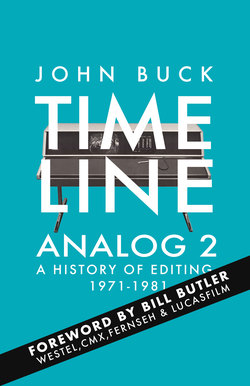Читать книгу Timeline Analog 2 - John Buck - Страница 19
На сайте Литреса книга снята с продажи.
RECESSION
ОглавлениеA small talented group had quit Ampex ten years earlier to start their own company called Memorex. Larry Spitters and his colleagues had enjoyed tremendous growth in the computer peripherals business over five years that turned their original investment of $12,500 into $18 million.
A rapid downturn in the US economy followed by business challenges from the International Business Machines Corporation (IBM) had seriously affected Memorex’s profits.
Spitters and James Guzy, an executive of Memorex, held a press conference in New York, telling reporters that they believed I.B.M. had:
...created a monopoly environment that, though often benign, was detrimental to the future growth and health of the data processing industry in the United States and the world
The troubles could not have come at a worse time for the Memorex subsidiary, CMX Systems. Professor Thomas Baggerman continues:
CBS Television developed and employed the CMX 600 for two important and interrelated economic purposes involving unions and the production process. Prior to the CMX 600, television production on videotape was almost exclusively of multi-camera programs, usually recorded “live-to-tape” to minimize the onerous burden of video editing.
However, several decades of single-camera film production had refined that art into an extremely efficient process and CBS saw the potential for cost savings by replacing the film camera and its attendant expenses of single use film and film developing with a video camera.
The second economic impact and perhaps the more important one to CBS corporate, was compelled by jurisdictional battles with technical unions. Video editing had evolved as a responsibility of the electricians and engineers tasked with installing and setting up the machines, the IBEW and NABET. Contracts with these unions prohibited the use of film in the CBS television studios, a limitation that chafed managers at the network.
Members of the US television industry unions started a strike that Time magazine called the ‘CBS Cliffhanger’:
The crucial dispute between IBEW and CBS is not so much wages and fringe benefits as an issue relatively new to TV labor negotiations: automation. Although CBS claims that no jobs are in jeopardy, union leaders contend that a number of electronic breakthroughs have encouraged CBS to reduce IBEW jurisdiction over new equipment.
Another bone of contention is a device called the CMX 600, which is still in the development stage.
With it, producers of future programs will be able to edit videotape by simply punching instructions into the machine. CBS is willing to let IBEW technicians control the CMX 600 for editing news and documentary shows, but it wants producers and directors of entertainment programs to be free to edit without the aid of union middlemen.
CBS believed that the resistance of editors and the International Brotherhood of Electrical Workers (IBEW) and National Association of Broadcast Employees and Technicians (NABET) unions would subside.
CBS had expected to place five systems in Hollywood and ten in New York and this would have returned the research and development investment.
They also believed that other networks would follow and the ultimate worldwide sales figure may reach 60 units. Despite the optimism in 1970, the ground-breaking device was mentioned in just a few paragraphs of the Memorex 1971 annual report.
Two joint ventures were organized under the auspices of the CBS/Comtec Group during 1970. One, with Memorex Corporation, has as its initial product a RAVE (Random Access Video Editor) for use in broadcast and related industries. CMX Systems has sold one RAVE to date.
Jerry Youngstrom recalls:
It was obvious that the sales figures that we had used to scale the product development of the CMX 600 and 200 were not going to happen. When I walked out of sales meetings, with any of the main players, I realized that the territorial battles between all of the concerned groups would continue well past what would be good for CMX Systems.
Editors were struggling with the workflow paradigm of a light pen and touch screen interface because they were more accustomed to working on film editing systems. They told researchers that they ‘felt removed’ from the editing process. Jerry Youngstrom recalls:
The System/600 was history, CMX needed to downsize and I was the first casualty. It was a wonderful ride and working with a creative and dedicated engineering team is the greatest reward for any engineering manager.
Art Schneider summarizes:
The CMX 600 was more than a decade ahead of its time. It was a great system and an amazing tool but it was way too expensive at $500,000 to use solely as an offline editor.
CFI had to charge $400 per hour in 1971 just to break even when considering the high maintenance of the system and the initial investment. Added to this was the fact that it took longer to transfer rushes to the digital storage platters, that it would to edit the actual project.
